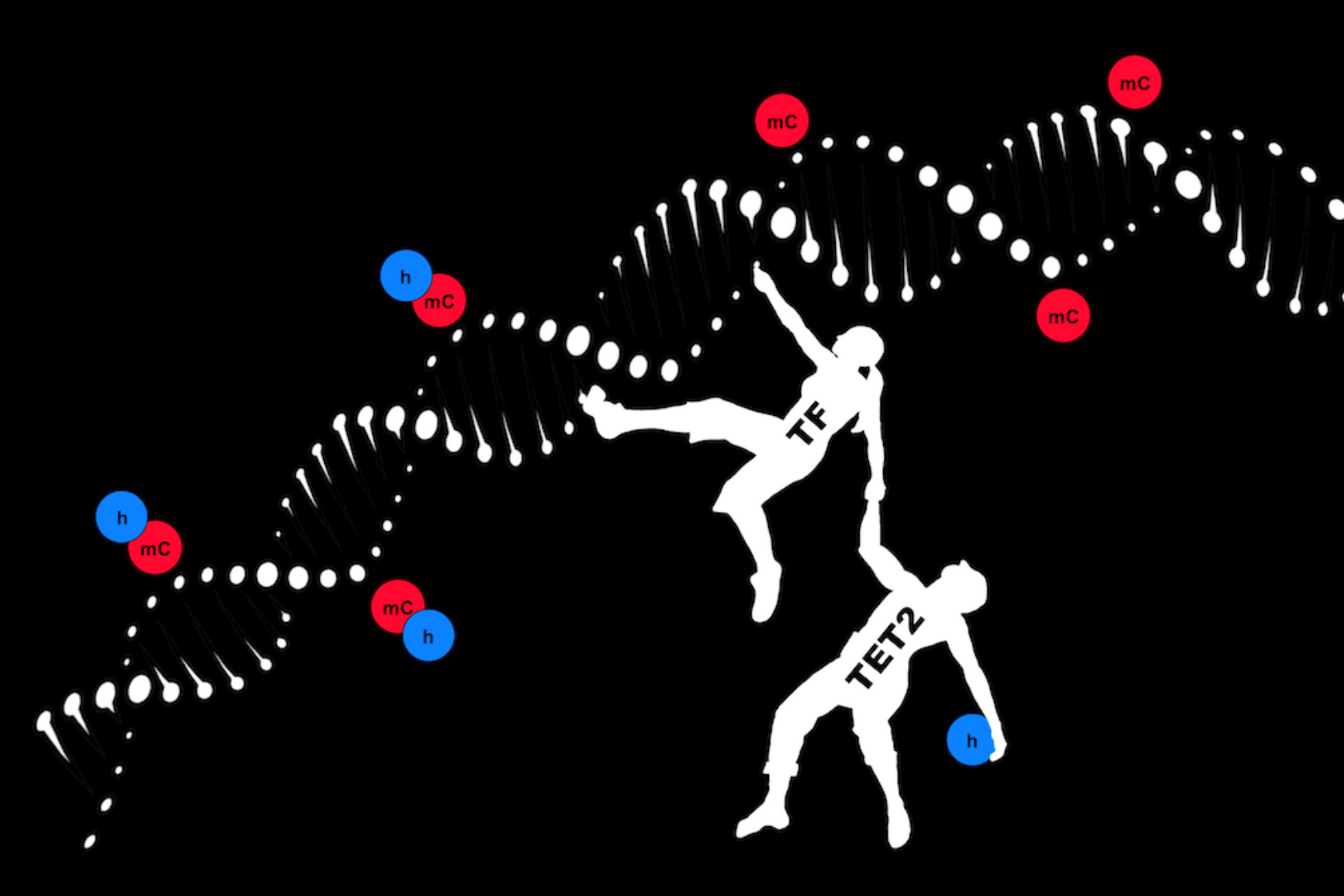Role of Tet2 mediated active demethylation during cell reprogramming
DNA methylation during development
Cytosine methylation (5mC) of CpGs is the major epigenetic modification of mammalian DNA. It is important for development and cancer but its role in gene regulation during differentiation remains poorly understood. DNA demethylation can be either passive, by dilution of DNA methylation after each cell division, or active when initiated by Tet dioxygenases. Cell fate decisions are typically initiated by the binding to DNA of sequence specific transcription factors (TFs) to regulate gene expression. This occurs in concert with epigenetic modifications, which include DNA modifications that can create transcriptionally permissive or repressive chromatin environments. However, to what extent the dynamic interplay between DNA modifications and chromatin-associated proteins is a driving force of cell fate decisions, such as somatic cell reprogramming, is unknown.
Tet2, an enzyme required for active de-methylation, is required for cell reprogramming
Of the three Tet enzymes described, Tet2 is the family member most important for somatic cell reprogramming. The knockdown or knockout of Tet2 partially impairs the OSKM-induced reprogramming of somatic cells and Tet2 over-expression increases the irreprogramming efficiency. As Tet2 lacks a DNA binding domain, it needs to be recruited by a sequence specific regulator to relevant gene regulatory elements. A number of transcription factors interacting with Tet2 have been described but the role of Tet2-mediated active demethylation in cell reprogramming, and which transcription factors recruit the enzyme to the DNA during this process is poorly understood.
Tet2 is recruited to the DNA by three transcription factors during cell reprogramming
We have studied the dynamics of DNA methylation and hydroxymethylation at single nucleotide resolution during the highly efficient C/EBPa-enhanced conversion of B cells towards iPSCs. Our data show that Tet2-dependent demethylation occurs throughout reprogramming and suggest that at least three TFs can recruit Tet2 to gene regulatory elements of relevant target genes, namely C/EBPa, Klf4 and Tcfp2l1. We also found the gene regulatory elements of key pluripotency transcription factor genes are actively demethylated within 1 day after the cell’s exposure to OSKM. Finally, our work revealed another unexpected finding, namely that transcription factors can recruit Tet2 to specific DNA regions without the displacement of the surrounding nucleosomes. This appears to represent a novel way in which transcription factors act as ‘pioneers’ in their interaction with chromatin. It will now be interesting to find out the role of these regions in cell fate decisions.


